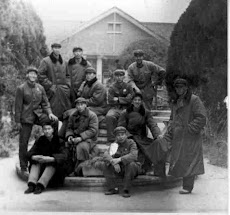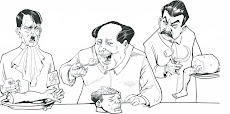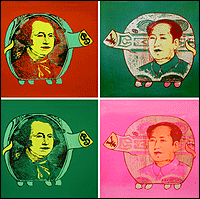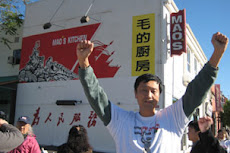 Tuesday, December 22, 2009
Tuesday, December 22, 2009 China's strategic alliance with Iran is off most radar screens
By Fariborz Saremi
Since the 1990s China has successfully been expanding its influence in the Middle East and Iran in particular without attracting the attention of the global community.
China views Iran as a significant potential ally in its attempts to counter-balance western power. Clearly Iran serves as a major source of oil. In addition, it is a leading geopolitical player in the region, capable of heavily affecting the political balance in the Middle East.
In addition to energy, China is extensively involved in many areas of Iran's economic development. To help develop Iran's economy, empower it, and open up consumer markets for Chinese-made goods as well as investment opportunities have become China policy priorities. More than 100 Chinese state companies are working in Iran to help build infrastructure projects-highways, ports, shipyards, airports, dams, steel complex and more.
One becomes impressed by the supply of inexpensive Chinese products in the supermarkets and department stores of Tehran and other large Iranian cities like Esfahan, Shiraz, Tabriz and Mashhad. Two-way trade reached $ 11 billion in 2008.
China, Russia and Iran have all become major players in the Asian Energy Security Grid, which was established to counter perceived Western hegemony over the World's energy resources. Furthermore Iran is a passive member of the Shanghai Cooperation Organization, which sets out to promote Beijing's interests. Established in June of 2001, the SCO is an expansion of the "Shanghai Five, a regional grouping begun in 1996. China appears to be receptive to Iranian efforts to expand its role in this grouping.
The national interests of Iran and China are in clear contradiction to the presence of the American military forces in Central Asia. Its members are China, Russia, Kazakhstan, the Kyrgyz Republic, Tajikistan and Uzbekistan. Many observers believe that one of the original purposes of the SCO is to serve as a counterbalance to NATO.
Since the 1980s Iran's eagerness to bolster its military and its weapons production capabilities has been given considerable assistance by China, which is very cleverly gaining influence and popularity by transferring arms technology. These arms sales have earned China billions of dollars and billions of gallons of oil through "oil for arms" schemes and enabled Iran in its sponsoring of insurgents and Shiite terrorists in Iraq and other Persian Gulf states. Thus, Iran is now a major threat to the Arab states, Israel and even the USA.
The serious military hardware China has supplied to Iran has included over $1 billion dollars worth of Silkworm cruise missiles, some of which were fired at two U.S. oil tankers in 1987 in the Persian Gulf and the Silkworm's successor, the Chinese Eagle Strike.
Iran has a large number of Chinese made C-801 and C-802 anti-ship missiles deployed in coastal batteries along the eastern shore of the waterway, aboard ships and on island in the Strait of Hormuz. The missiles are expected to play a key role in any effort to block or control the waterway. The narrow shipping lane is ideal for the use of anti-ship missiles. Over the past several years, U.S. coalition naval forces in the Persian Gulf and the Arabian Sea have conducted a series of exercises aimed at countering possible Iranian attempts to close the Strait of Hormuz whether the Iranians use large swarms of small, high-speed armed craft or maritime suicide attacks.
Iran claims it has massed a fleet of 1000 low-tech speedboats to counter the U.S. Fifth Fleet's armada of 30-40 high-tech warships. Broadsides of cruise missiles would be more dangerous. Iran has three frigates and 20 fast attack craft including Chinese supplied Huodong boats, capable of mounting such attacks.
In 2008, Iran also again test-fired Shihab 3 missile, which it says put Israel within range. Such an intermediate range ballistic missile and much longer versions, the Shihab 4 and 5 are under development with China's assistance. On Dec. 16, Iran also test-fired what it said was a faster version of a medium-range missile which could allow it to strike Israel, drawing international censure and warnings of "serious" fallout. The Sejil 2, powered by solid fuel, is capable according to Iran of traveling 2,000 kilometers, which would put arch-foe Israel, the Arab states and even parts of Europe within range. North Korea and even China may have assisted Iran in developing this missile.
Although China has vehemently denied it, it would seem from international intelligence reports that Beijing has also been supplying Iran and other rogue states with WMD, including nuclear, biological and chemical weapons. China has reportedly been a major focus of Iranian procurement activities, with Iranian front companies successfully acquiring nuclear-related materials from China in recent years. The two countries are known to have signed nuclear accords in 1989, and again in 1991, paving the way for what would become a vibrant and multifaceted atomic partnership.
China's assistance is not just confined to hardware. Clearly China's secret services gave the Tehran regime intelligence assistance during and after the disputed presidential election in June 2009, we are informed. There has even been some hints that Russian and Chinese services have cooperated in providing the Clerics and particularly the IRGC military intelligence.
Some western observers regard China, a long time ally of Iran and a major buyer of Iranian oil and gas, as key in persuading Iran to give up its sensitive nuclear work. In reality, however, Beijing has its own agenda toward Iran and the Middle East and is reluctant to consider steps that might hurt its strategic ties with Iran and endanger its crucial economic interests.
Economically China's strategic ties with Iran have to some extent been made easier. Since Royal Dutch Shell and Respol withdrew in 2008 and France's Total announced it was to abandon its investment in a huge gas project in Iran's South Pars Field, Iran's Pars Oil and Gas Company and the China National Offshore Oil Corp. have agreed to exploit the North Pars Gas field and sell the gas on international markets.
Only Angola and Saudi Arabia supply more oil to China than Iran. China is Iran's biggest oil customer. In the future their relationship will be given long-term stability via an agreement by which China's oil giant Sinopec Group will help develop Iran's Yadavaran oil field in return for Iran's commitment to supply 150,000 barrels of oil a day for 25 years at market price.
Beijing policy toward Iran epitomizes its policy toward other major states of the Middle East region, with some variations. Arms sales, especially missiles, have been a very effective instrument in China's efforts to make inroads to the Middle East. This approach in addition to earning valuable foreign exchange, has helped China to foster diplomatic and strategic ties with Iran, Syria and Saudi Arabia.
All indications suggest that China will not stop at building up strategic alliances in the Middle East and Africa, where it already has strong economic ties. It also has a significant relationship with North Korea. In South America, Panama, Venezuela and Brazil are all keen to develop closer relations with China. Brazil Indeed, in its attempts to extend its own global reach has forged links not only to China but also to Iran.
To some extent the USA has neglected China's growing influence. It has failed to recognize the skill with which China has been able to expand its geopolitical will. Iran, the new regional power in the Middle East, has at least one guaranteed ally among the permanent members of the UN Security Council.
Dr.Fariborz Saremi is a political and military analyst living in Germany. He is the spokesperson for the Azadegan Foundation in Germany and a contributor to the Defense & Foreign Affairs Special Analysis.

































No comments:
Post a Comment